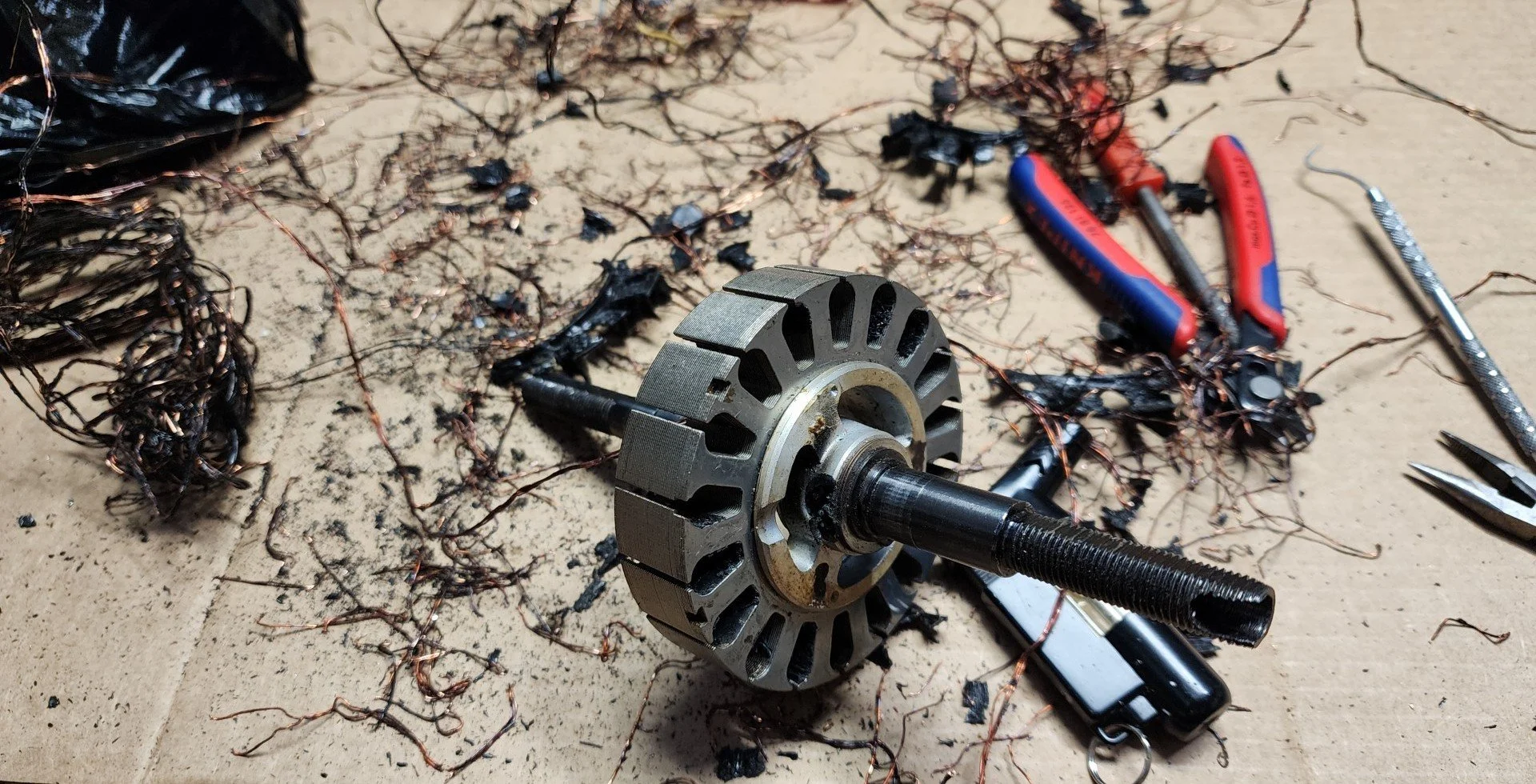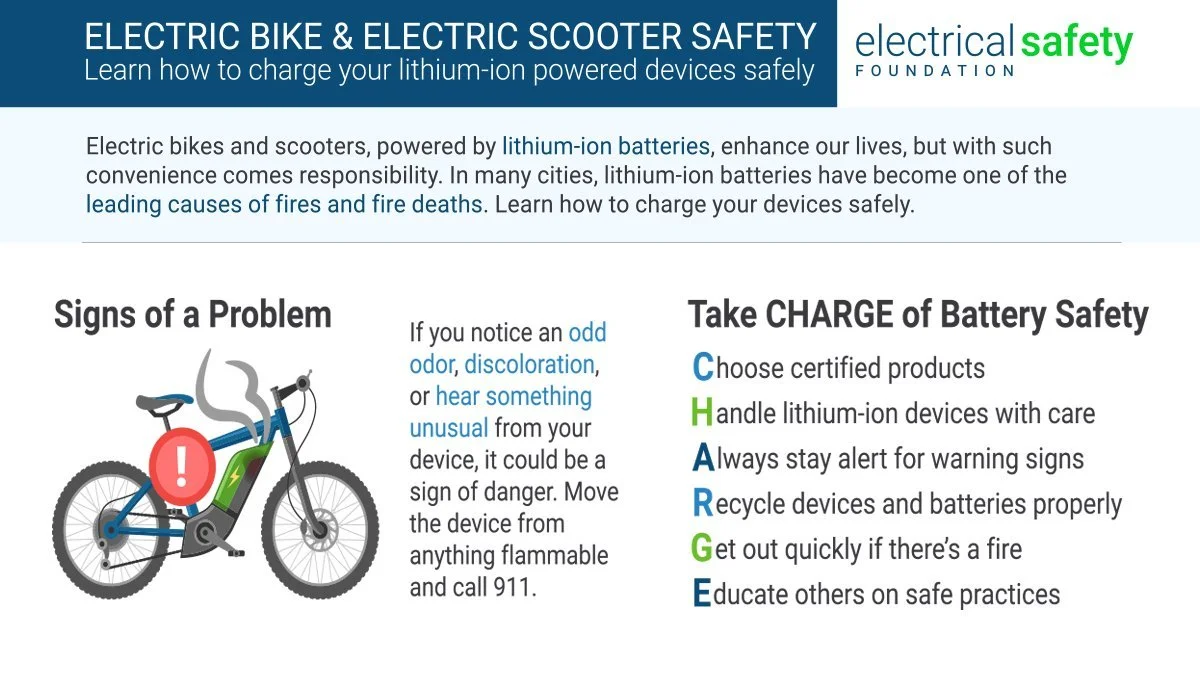
LITHIUM ION BATTERY CARE
Caring for your lithium-ion PEV battery is crucial for its longevity and optimal performance. Here's a comprehensive list of instructions:
Initial Charge: When you first get your eBike/PEV, fully charge the battery before its first use. This helps in initializing the battery management system and ensures maximum capacity.
Use Compatible Charger: Always use the charger provided by the manufacturer or a compatible one. Using incompatible chargers can damage the battery or lead to inefficient charging.
Avoid Extreme Temperatures: Lithium-ion batteries perform best at moderate temperatures. Avoid exposing your eBike battery to extreme heat or cold, as it can affect its performance and lifespan. Store the battery in a cool, dry place when not in use.
Regular Charging: It's recommended to charge your eBike battery after every ride, especially if you've used a significant portion of its capacity. Avoid deep discharges whenever possible, as frequent deep discharges can degrade the battery over time.
Avoid Overcharging: Once your battery is fully charged, unplug it from the charger. Leaving it plugged in for extended periods can lead to overcharging, which can degrade the battery's capacity over time.
Monitor Charging: Keep an eye on the battery while it's charging. If you notice any unusual behavior such as overheating or swelling, immediately disconnect the charger and contact the manufacturer for assistance.
Regular Use: Regularly using your eBike helps in maintaining the battery's health. Even if you're not planning a long ride, it's good to take short trips to keep the battery active.
Store Properly: If you're not planning to use your eBike for an extended period (e.g., several weeks or months), partially charge the battery (around 50-60%) and store it in a cool, dry place. Avoid storing it fully charged or completely discharged for long periods.
Inspect for Damage: Periodically inspect your eBike battery for any signs of physical damage or wear. If you notice any cracks, leaks, or other abnormalities, stop using the battery immediately and seek professional assistance.
Regular Maintenance: Follow the manufacturer's guidelines for regular maintenance of your eBike, including the battery. This may include cleaning the contacts, checking for loose connections, and ensuring proper mounting of the battery on the bike frame.
By following these simple but comprehensive instructions, you can ensure that your lithium-ion eBike battery remains in good condition and provides reliable performance for years to come.
For more information/guies about Batteries, visit this site from FDNY/DCWP Fire Safety.
https://www.nyc.gov/site/fdny/codes/reference/lithium-ion-battery-safety.page
Also visit for more bike & scooter safety guides: https://www.esfi.org/electric-bike-scooter-safety/

For recycling info go to: Call2Recycle
Burnt controllers are a pain in the ass. It stops you from riding and can happen at any moment. The moment you hear some popping noises, a puff of magic smoke, and boom, your controller is done. We can replace and repair controllers at EWC.
Why do Motors Burnout
Motors burnout from excessive current it’s a common issue in many electrical devices and machinery. When a motor is subjected to more current than it is designed to handle, several factors contribute to its burnout.
1. Overheating: Excessive current leads to increased heat generation within the motor windings. This rise in temperature can exceed the insulation’s thermal capability, leading to insulation breakdown and short circuits, ultimately causing the motor to burn out.
2. Insulation Failure: The excessive current can degrade the insulation materials within the motor, leading to insulation breakdown and short circuits. This compromises the motor's integrity and can result in burnout.
3. Mechanical Stress: High current levels can cause sudden torque spikes and rapid acceleration, leading to mechanical stress on the motor's components. This can result in physical damage, such as broken windings or bearing failure, which contributes to burnout.
4. Reduced Lubrication: Excessive current can also lead to increased friction and heat generation within the motor. This can reduce the effectiveness of lubrication, leading to increased wear and ultimately motor failure.
Preventing motor burnout due to excessive current involves various measures, including proper sizing of the motor for the application, ensuring adequate cooling and ventilation, regular maintenance to prevent insulation degradation, and employing protective devices, such as overload relays and fuses, to limit current in case of a fault.
Understanding these factors can help in designing and operating systems in a manner that minimizes the risk of motor burnout due to excessive current.
Water damage can come in many forms. It creates dangerous conditions such as this one. the customers complained that after riding through a stormy day their scooter would randomly shut down and was not able to hold its charge. As you can see, not only did the water damage the inside of his frame, but the battery was also installed incorrectly. Any type of protrusion can easily and slowly wear away the fiberglass casing of internal packs. The customer is lucky.






